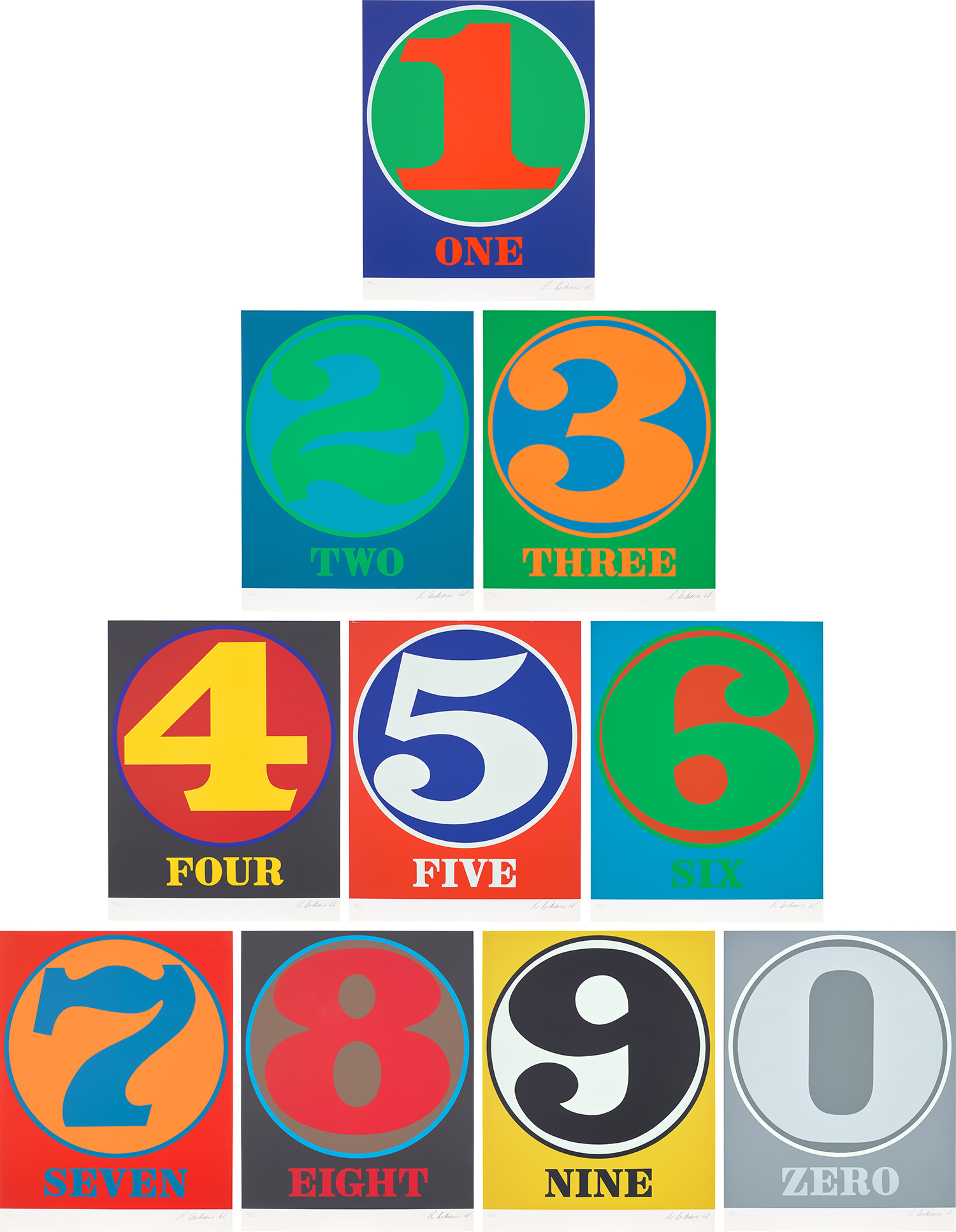

35
Robert Indiana
Numbers (S. 46-55)
1968
The complete set of 10 screenprints in colours, on Arches paper, the full sheets.
all S. 64.8 x 49.8 cm (25 1/2 x 19 5/8 in.)
All signed, dated and numbered 75/125 in pencil (there were also 35 artist's proofs in Roman numerals), co-published by Edition Domberger, Stuttgart, and Galerie Schmela, Düsseldorf, lacking the portfolio, pages and folios, all framed.